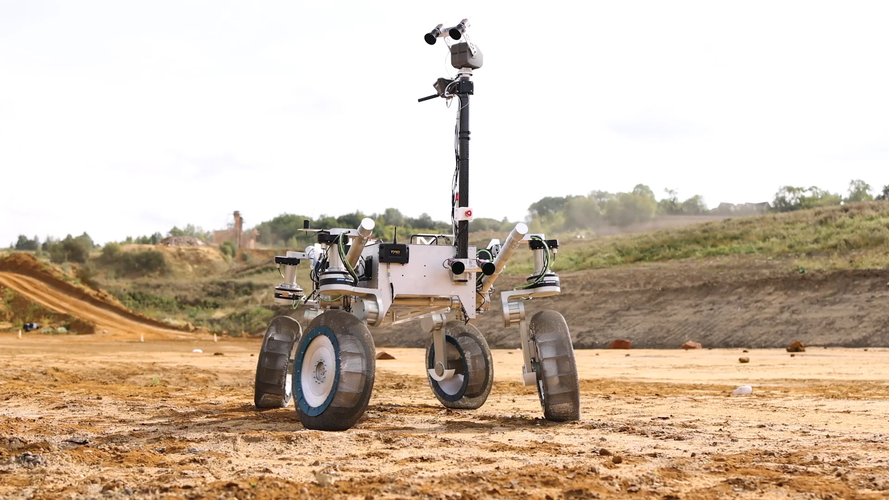
Rovers are made to roam, and what better place to roam than the great outdoors? It wasn’t Mars, but a quarry in the south of England where a wheeled robot put to the test its navigation skills for the first time in a real-world scenario.
Engineers from ESA and Airbus call this rover Field Trial Rover System, or FTRS. They wanted the rover to learn how to scout another planet dodging boulders, overcoming obstacles and getting close enough to interesting samples – all of it without human intervention.
Over two weeks in September 2022, the shakedown gradually increased in difficulty. From flat and straight-line traverses to rocky, zig-zagging setups dotted with obstacles, the rover showed it could do its job autonomously.
The quarry gave engineers the flexibility to present the robot with several challenges at varying speeds – up to 6.6 cm per second – such as adding obstacles between waypoints, or altering the sequence of commands to see which course of action FTRS decided to take.
Automated navigation relied on two stereo cameras attached to the rover: one at the top of the mast and another one at deck level. At every stop, the rover used the cameras to build up a 180-degree map of the surroundings and plan its next steps.
The trial involved cutting edge technology led by the UK with contributions from France, Poland, Switzerland, Canada and the USA that could one day fly to the Moon and Mars.
The rover is shown sped up in some scenes of this video for editing purposes.
Click here for original story, Testing rover moves for the long ride
Source: ESA Top Multimedia